
|
|
A modern alchemical hoax exposed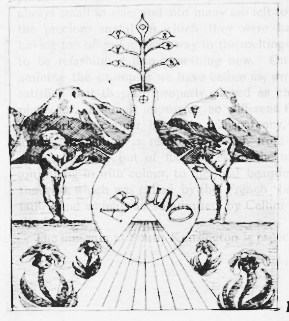 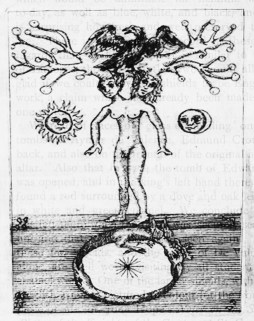  Earlier in 2015 I came across, on the Internet, a set of alchemical emblems unknown to me. I was intrigued and saved these onto my computer but did not at that time have the leisure to look into this. This morning I found these images in one of my folders and decided to look further into them. These engravings appeared to come from a book entitled Codex Veritatem by an Adamo della Rovere. Little could be found about this person or his book and all finds linked back to a Facebook page set up in January 2015, under the title Adamo della Rovere. www.facebook.com/Adamo-della-Rovere-625312867596983 At first glance everything seemed okay. It appeared to be a Facebook page set up by someone who had discovered the work of an Adamo della Rovere and wished to bring this to our attention. The creator of the page even gave us a link to a site where one could download a scan of the book itself. archive.org/details/AdamoDellaRovereCodexVeritatem Of course I immediately went and downloaded a copy. The book proved to be incomplete missing many pages, but included eight rather fine emblematic engravings, some of which appeared to draw from existing alchemical emblems, found in some editions of Basil Valentine, Robert Fludd, Michael Maier, and Samuel Norton. So far so good. The Latin text on the pages did not appear to describe or link to the images, but this is not at all unusual in alchemical books. Instead the text seemed to describe the bodies of animals. Intrigued, I decided to look and see if I could find a complete copy of the work and so I visited a number of the major libraries including the British Library and the German libraries which hold digital archives of early printed books. I could not find this book in any of these major collections, nor any information on the supposed author Adamo della Rovere. The Facebook page suggested that this incomplete book was the only surviving copy of the work. Happily the person who scanned the work left the accession label which was for the University of Illinois Library with the number B41P. I immediately went and looked at the University library's database. Strange, I could not find the book, nor any author named Adamo della Rovere, and indeed the accession number did not even exist in their catalogue. Now this made me very suspicious, so I examined the work in more detail. There were some strange features. On some pages 66-67, 112-113, 276-277, 284-285, 336-337, 346-347 the catchwords at the bottom of the even pages did not match. Of course, this does happen occasionally in printed books, due to carelessness of the printer, or mispagination by the binder. 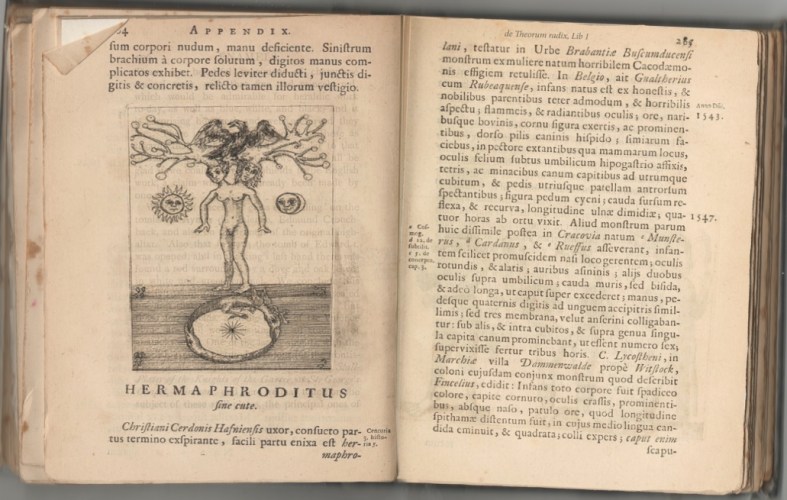 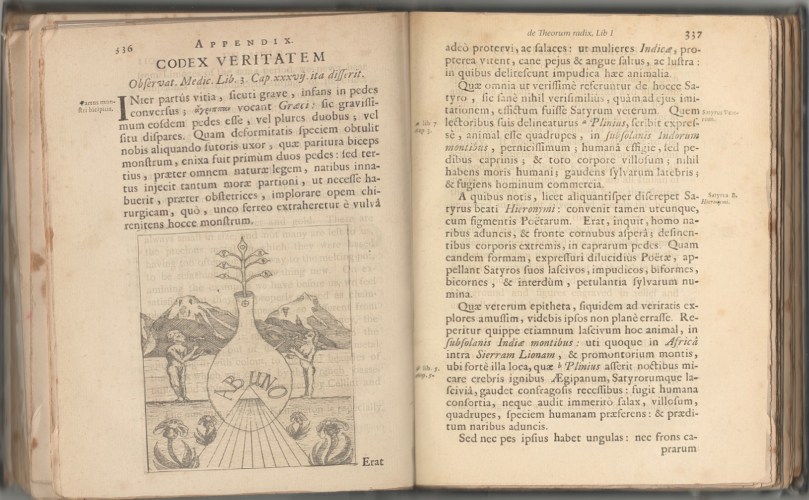
So I looked a bit deeper. I noticed that the heading on the even pages which said "A.R. Codex Veritatem," seemed to my eye to be in a modern typeface. At this point I was sure this was a hoax. 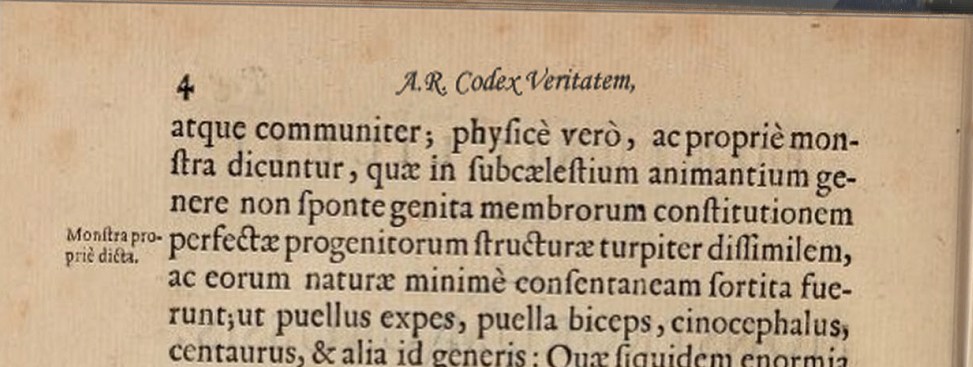
I looked again at the title page. It had a subtitle "Ex Recensione Gerardi Blasii. M.D. & P.P.", a printer's device and a place and date of publication, Amsterdam 1665. It also referred to "Monstra". There was a great interest in the early modern period in monsters or fabulous animal forms. It only took a few seconds for me to find the book edited by Gerhard Blasius on Google Books. The book was by Fortunius Licetus De Monstris Patua, 1668, and it included hundreds of engraved images of monsterous animals. The hoaxer had taken pages from this book and contrived new page titles, and inserted his "engravings" to replace the original ones. I show below in parallel, pages from the original work and the Adamo della Rovere contrivance. This was quite a clever forgery and may have deceived people unfamiliar with original printed works. What would have inspired the person who created this deception? Was this merely an exercise by some graphics student, or was there some agenda? Of course alchemical hoaxes and contrivances are familiar in the history of alchemy from Nicolas Flamel myth, the Monastic invention of Basil Valentine, through to Fulcanelli in our own century. A number of books were falsely ascribed to well known writers of the time, as with the alchemical works of Ramon Lull, or were devised to deceive the readers in various ways. The motives of our Adamo della Rovere fabulator is unclear. On his Facebook page he begins to give us some supposed translations from the book We are not the only creatures that inhabit the universe, the universe is made up of all living intelligent consciousness (including humans) and expanding. Everyone, ultimately, are part of a supreme being. Codex Veritatem, 1629. The road to the whole can only be experienced through the acceptance and practice of interconnection with all forms that make up the whole. Codex Veritatem, 1629.These rather trite statements suggest that the contriver took delight in creating his invention, but did not have any plan to follow through. Perhaps he was expecting more of a response than 43 likes over a year on Facebook (at this date 31 December 2015). He provided a potted biography of his supposed author. In 1629 he was in Padua where he published three copies of his Codex Veritatem. Adamo was supposedly burnt at the stake for heresy in 1630. One copy of the Codex Veritatem is burned on the spot, the other two were saved from the fire, one disappears from the historical record and other is lost in the war succession of Mantua. The fable continues:- "After 41 years the Codex reappears in Prague, is rumoured that the Codex Veritatem have been travelling around different parts of Europe during the 30 years war. It was copied and distributed in the Underground culture. The Codex Veritatem was introduced in the popular imagination because of unofficial reproductions and fakes." It is strange that none of these "unofficial reproductions" are found in the historical record. Our contriver cannot resist following this up into the modern era:- "After many years one copy reached the hands of Franz Bardon, a Czech occultist, the Codex influence his esoteric work. The knowledge and the skills of Bardon were so good that the Nazis wanted their collaboration, but his rejected." Although I find such contrivances amusing on one level, it does rather muddy the waters of alchemical research, which are obscure enough without having a layer of nonsense imposed on it. Sadly, these devised works pollute proper research. They will not deceive any academic or serious investigator, but they do make it difficult for people developing an interest in alchemy to filter out the nonsense from the reality of the subject. So I decided this morning to exhaustively document this fabrication so that people searching the Internet will find my page and the true nature of this alchemical "book". It may well be that, now his game is revealed, he will delete his Facebook page, but this will not solve the problem, as traces of this will remain archived on various Internet sites and could even be reworked in the future by someone either mischievously or merely misled by the original fabulation. 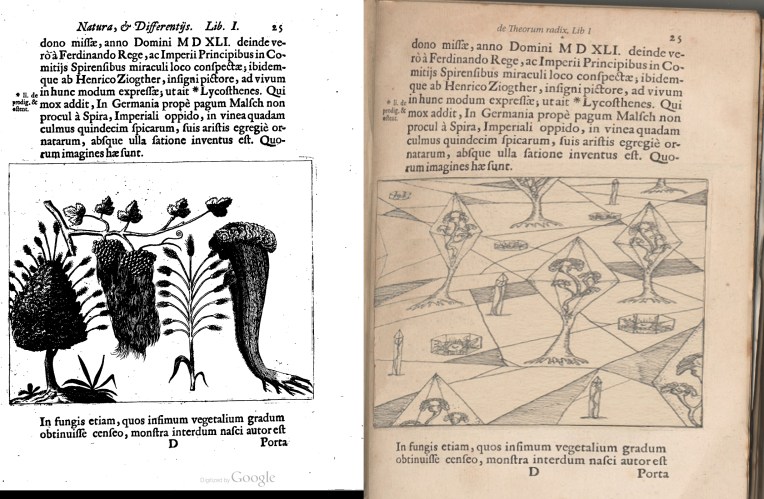 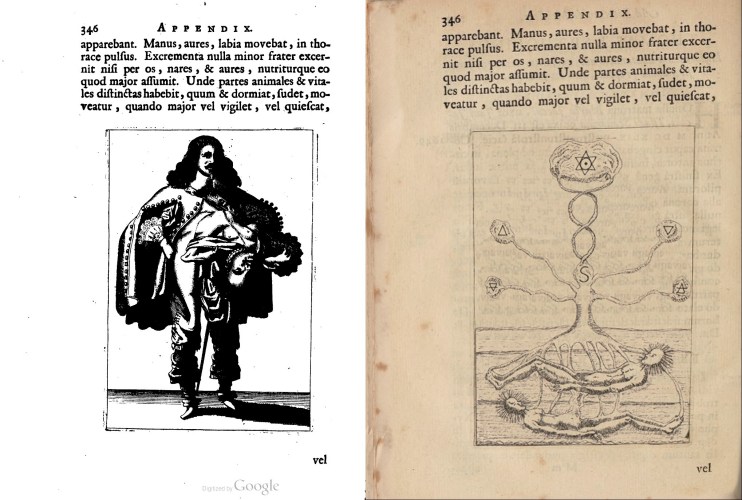
|